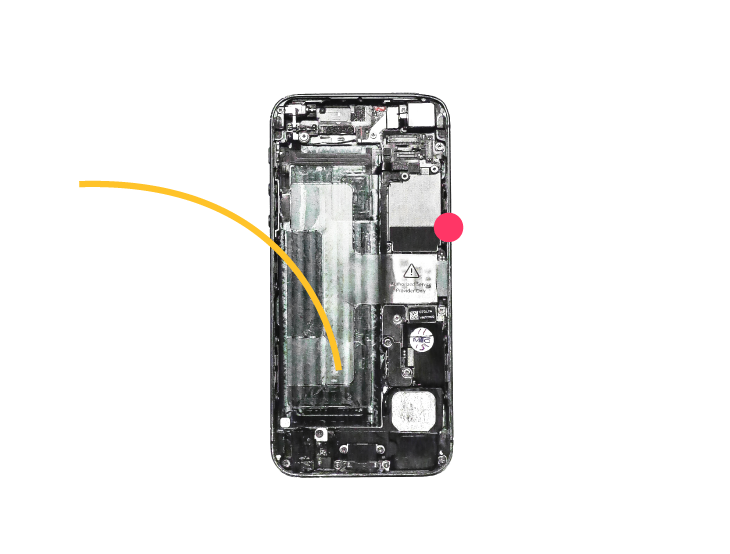Business is harsh. While innovation does lead our world, shaping our current -and future- reality, a quick Google research will show you that over 80% of new products/services fail.
What’s interesting though, is that the majority of these products were financed and developed by really successful companies. Here’s a list of 25 big-failed products provided by Business Insider and another one with classics that you surely have heard of while in college.
Bearing all these in mind, it is more than safe to assume that no matter who your company is, there’s always a fair probability of failing.
Now you are probably wondering: is there any way to safeguard ourselves -and our companies- from building products that are destined to go to the trash bin?
This is what I will try to do today: I will make an attempt to dig deeper into the process that is generally followed by product managers when it comes to new product development.
Disclaimer: Even though this post’s main scope is to provide free knowledge and give you some food for thought, keep in mind that it was written by a Useberry member and not an independent source.
NPD process
Before we start, let’s see how the Product Development and Management Association (PDMA) describes the NPD process:
A disciplined and defined set of tasks and steps that describe the normal means by which a company repetitively converts embryonic ideas into salable products or services.
Now, there is a single keyword in this definition that we should always bear in our mind and that’s “repetitively”.
You will understand why this is -IMHO- important, later in this post. For now, let’s forget it.
If you happen to be in NPD for many years, you are probably familiar with these 2 processes:
For those that don’t remember or are relatively new to the field, here’s a quick take.
In a nutshell, the first model treats every group of activities throughout the process as stages. These stages are: ideas, scoping, business case, development, testing, and launch. When completed, every stage has to be reviewed before continuing down the funnel.
The second model, developed by Booz, Allen, and Hamilton back in 1982, is considered by many scholars the source of all the models we currently have and it has 7 steps: new product strategy, idea generation, screening and evaluation, business analysis, development, testing, and commercialization.
At the time that these models were developed, they were considered groundbreaking. This was reflected by the adoption rate they have had across the industry even until now.
Their limitations, however, asked for newer and fresher approaches. And this is why the lean startup approach rose in popularity starting from Silicon Valley and finally conquered the whole pm world.
Again for those that are not aware of the lean startup stages (I highly doubt it), they are the following: solution fit, product-market fit, and scale. To put it more nicely, the cycle of the NPD is optimized by throwing outside all the unnecessary activities that make a product complete, thus the name lean.
The models above cover around 80% of the contemporary landscape, so it is safe to say that you will probably fall in the same category.
Why new products fail

To have a better picture of what is really going on and understand why these theories are not 100% efficient, let’s provide the main reasons that new products usually fail (retrieved by Google search and Google scholar).
So, products are most likely to fail if one or more of the following 10 statements are true (for our convenience we provided 10; surely, there are far more than 10):
- Inadequate -or even worse- biased market research
- Focusing on the wrong target group
- Ignoring customer needs and wants
- Inadequate education of the audience if the product/service is disruptive
- Performing poorly in terms of user experience
- Taking the product very early out of the market
- Having a bad pricing strategy
- Spending extremely high budgets in developing a product only to realize that it does not have a market fit
- Not finding the ideal timing to enter the market
- Pivoting in the wrong direction
Referring back to the processes provided above (bah and stage-gate) the reasons #2, #3, #4, #5 and #8 would have been avoided if there was a small tweak: testing the idea before developing it. Of course, even in that case, there are limitations that you still need to watch.
Regarding the lean startup process, the reasons #4, #5, #6, and #10 are strongly tied with the whole process, thus it is more difficult to find turnarounds.
The “do something rough and see what happens immediately” of this process’s implied mindset does not reflect a strategy and would easily mislead you. You may find this article from Harvard Business Review interesting.
Moving towards a more efficient model

While every company and product manager can always experiment with different models by making minor changes to the recommended ones it is suggested that every model should have the following steps divided into 2 categories:
First phase
- Generate ideas
- Decide on ideas
- Make a prototype of the concept
- Test the prototype
Second phase
- Develop a marketing strategy
- Do a business analysis
- Develop the product
- Test marketing
- Decide on commercialization
To get the most out of the first phase and fully align with your top management you might want to consider running Google’s favorite approach, design sprints. We wrote the most complete design sprints article ever and you can find it here.
Aristotle has said:
We are what we repeatedly do. Excellence then is not an act but a habit.
Recalling the word “repeatedly” it is extremely important to find what works best for you by trying things and by continuously auditing your processes. This way you will surely identify the sweet spot and take forward your company and – why not – the whole industry.
If you want, you can write below the process that you are currently following and, of course, reflect on the article as a whole.
Bonus

Recommended articles:
- https://sloanreview.mit.edu/article/why-great-new-products-fail/
- https://www.sciencedirect.com/science/article/abs/pii/S0019850117308350
Feel free to contact us!
We’d love to know your experience with Useberry and we will be excited to hear your thoughts and ideas.




